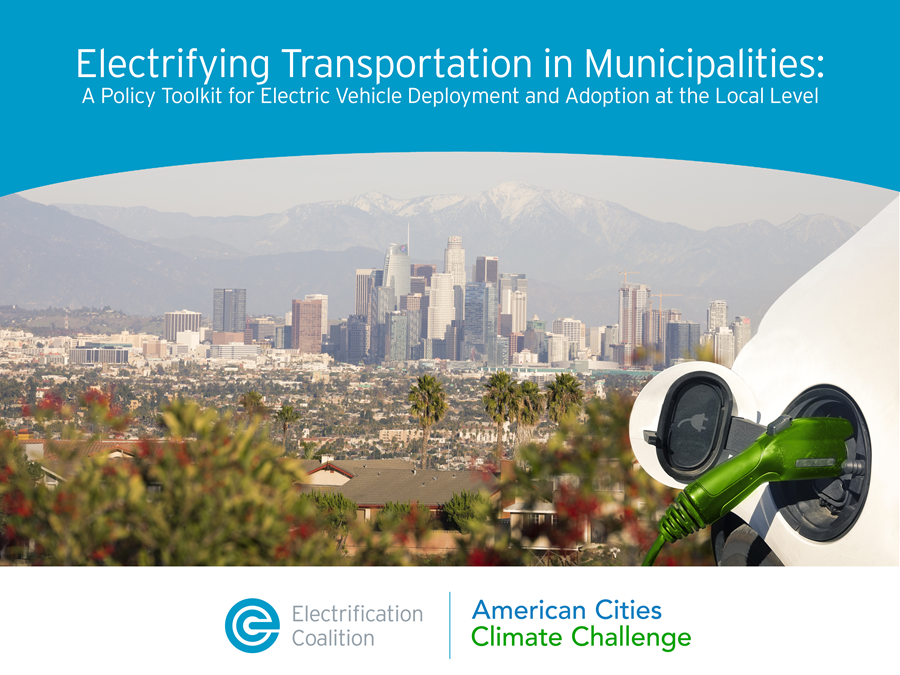The Electrification Coalition released a new guide for cities, outlining a suite of policies that will accelerate the electrification of transportation in their communities. “Electrifying Transportation in Municipalities” identifies the most effective policy levers that cities, towns and counties can use to expand charging infrastructure, transition fleets to electric vehicles and support EV adoption by consumers.
“The transition to an electrified transportation future requires a mix of
The guide identifies a set of essential EV policies that local governments can enact to electrify their own municipal and transit fleets and accelerate EV adoption in the communities they serve. It is designed to galvanize local policymakers and EV advocates in cities, towns, counties, metropolitan planning organizations, utilities, air quality districts, environmental health agencies, public works departments and transit agencies.
“Electrifying Transportation in Municipalities” outlines policies in five categories: charging infrastructure, multi-sector electrification, freight, fleet electrification and consumer adoption. The toolkit provides an assessment of each policy’s greenhouse gas emissions reductions, public health benefits, equity benefits and job creation opportunities. It also offers guidance on cost considerations, political obstacles and key stakeholders. Real-world examples of each policy illustrate it in action, at the local, state, utility, and federal levels.

